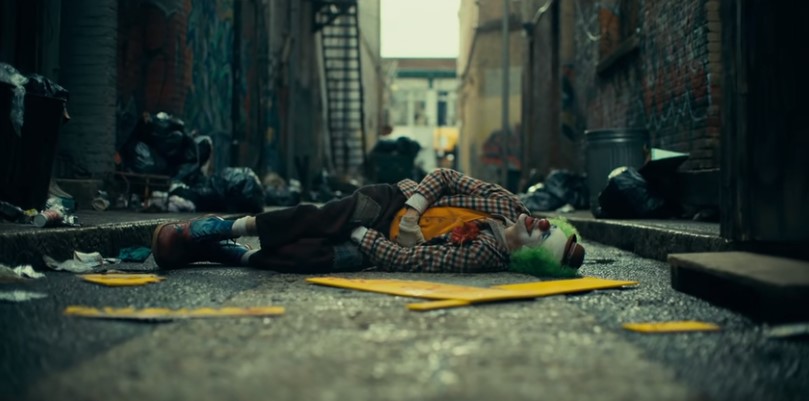
By Sean Redmond
Excerpt: “The Gotham that Arthur moves through is rendered as a set of lonely intersections marked and mapped by drudgery and decay. The desaturated palette of the film washes its buildings, roadways, transport systems, and institutions in sepia tones, dull green and grey hues, cold blues and off-whites. Waste is piled up on the sidewalks, lining each street with its degrading veneer. Signposts of termination and decline depopulate the narrative: ‘everything must go’; ‘going out of business’; graffiti sprawls its nihilist letters across almost all the film’s surfaces and places. Joker’s central locations form a connecting set of brutalist impressions: the monolithic Brooklyn Army Terminal stands in for Arkham Asylum; the deprived Anderson Avenue in the Bronx is the location for Arthur’s fortress-like apartment and the step street he climbs up and down; the Robert F. Kennedy (Triborough) Bridge that crosses the Harlem River carries the teal bus that Arthur mournfully rides home; and the abandoned Ninth Avenue Subway Station is the site where Arthur decides to murder the last of the drunken Wall Street brokers who had assaulted him on a near empty subway train.” Read the full article here
